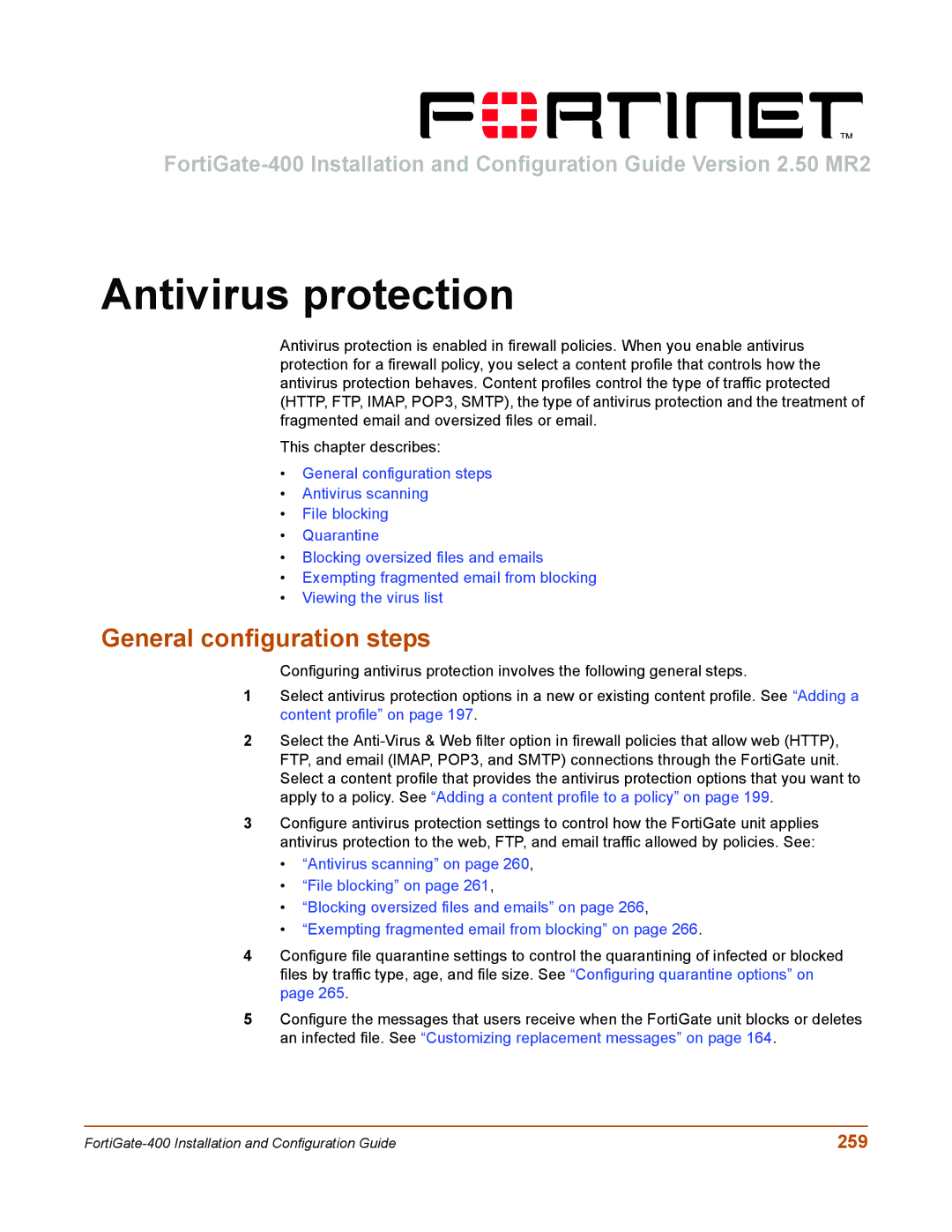
Antivirus protection
Antivirus protection is enabled in firewall policies. When you enable antivirus protection for a firewall policy, you select a content profile that controls how the antivirus protection behaves. Content profiles control the type of traffic protected (HTTP, FTP, IMAP, POP3, SMTP), the type of antivirus protection and the treatment of fragmented email and oversized files or email.
This chapter describes:
•General configuration steps
•Antivirus scanning
•File blocking
•Quarantine
•Blocking oversized files and emails
•Exempting fragmented email from blocking
•Viewing the virus list
General configuration steps
Configuring antivirus protection involves the following general steps.
1Select antivirus protection options in a new or existing content profile. See “Adding a content profile” on page 197.
2Select the
3Configure antivirus protection settings to control how the FortiGate unit applies antivirus protection to the web, FTP, and email traffic allowed by policies. See:
•“Antivirus scanning” on page 260,
•“File blocking” on page 261,
•“Blocking oversized files and emails” on page 266,
•“Exempting fragmented email from blocking” on page 266.
4Configure file quarantine settings to control the quarantining of infected or blocked files by traffic type, age, and file size. See “Configuring quarantine options” on page 265.
5Configure the messages that users receive when the FortiGate unit blocks or deletes an infected file. See “Customizing replacement messages” on page 164.
259 |
